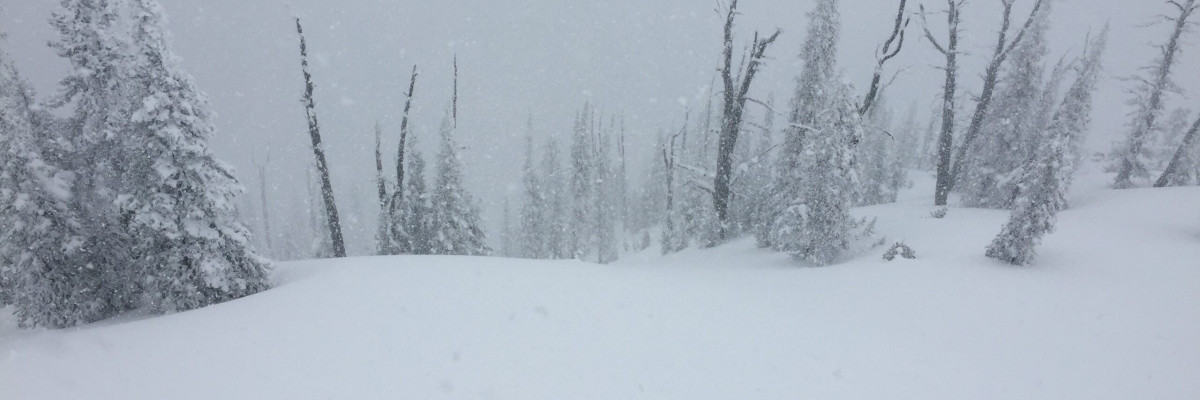The current avalanche danger is considerable in the west central Montana backcountry on steep(>35 degrees), wind loaded slopes above 7000 feet. Human triggered avalanches are likely on these slopes. On all other slopes the danger is a stout moderate. Today cautious decision making is essential and careful route finding is necessary.
Good morning, this is Travis Craft with the West Central Montana Avalanche Center’s avalanche advisory for March 26, 2016. This danger rating does not apply to operating ski areas, expires at midnight tonight and is the sole responsibility of the U.S. Forest Service.
Weather and Snowpack
Mountain temperatures range from 14 F to 24 F in the region. Winds are 04 mph with gusts of 06 mph out of the SSW in the Bitterroot. At Point Six in the northern part of the advisory area winds are 06 mph with gusts of 09 mph out of the WSW. The forecast area received 10-18 inches in the last 48 hours. The Twin Lakes Snotel in the central Bitterroot and North Fork Jocko in the northern portion of the advisory area picked up the most snow.
Dudley and I toured in the Rattlesnake yesterday. Ed was at Gash Point on Thursday in the central Bitterroot. Winter has made a strong comeback above 6500 feet. The first avalanche problem are wind slabs. In the last 48 hours we have had strong winds accompanying new snow, this has created wind slabs on leeward terrain that are small to large in size depending on the snow totals in the area. These slabs were touchy to Dudley and I in the Rattlesnake.
The Second avalanche problem are storm slabs. These slabs are reactive to human triggers on steep slopes(>35 degrees). The slab sits on top of the last melt freeze crust and ranges in depth from 10 inches to 16 inches throughout the advisory area.
The third avalanche problem are loose dry avalanches. The new snow sits on the last melt freeze crust and has not bonded well to this crust. Where the new snow has not consolidated into a slab you will likely trigger a large loose dry avalanche. These sluffs were large yesterday in the Rattlesnake and at Gash point on Thursday. These loose dry avalanches have the potential if you are not paying attention to knock you down and take you into a terrain trap on steep slopes(>35 degrees).
The last avalanche problem is cornice failure. It is spring, the cornices are large and with the warm temperatures in the afternoon cornices are weakening. Give cornices respect by limiting the time below them and give them a wide berth on ridges. Cornices break farther back than expected.
The last two melt freeze crusts are the layers of concern in the snowpack. They have not propagated in any of our tests in the last couple of weeks, but should be evaluated. If I was recreating today, I would dig a pit a meter into the snow pack and see if any of these layers are reactive with the new loading. I would look for signs of wind loading, scoured snow surface, hollow sounding snow and I would avoid aspects that showed any of these. The storm slab will show itself by localized cracking and shooting cracks from the skis on your feet or machine. The sluffs will be identified by loose unconsolidated snow triggered from your mode of travel in the backcountry.
Weather and Avalanche Outlook
Through Sunday we will have a high pressure system throughout the region. On Sunday a cold front is expected to push into the area and bring with it the ability to produce afternoon snow showers. It should leave the area by Monday night. These warmer conditions in our region will make it feel like spring in the high country until the cold front pushes in on Sunday. The avalanche danger will stay the same, but change the problem of loose dry to loose wet in the afternoons on sun exposed slopes.
Ski and ride safe. I will issue the next advisory on Tuesday.














